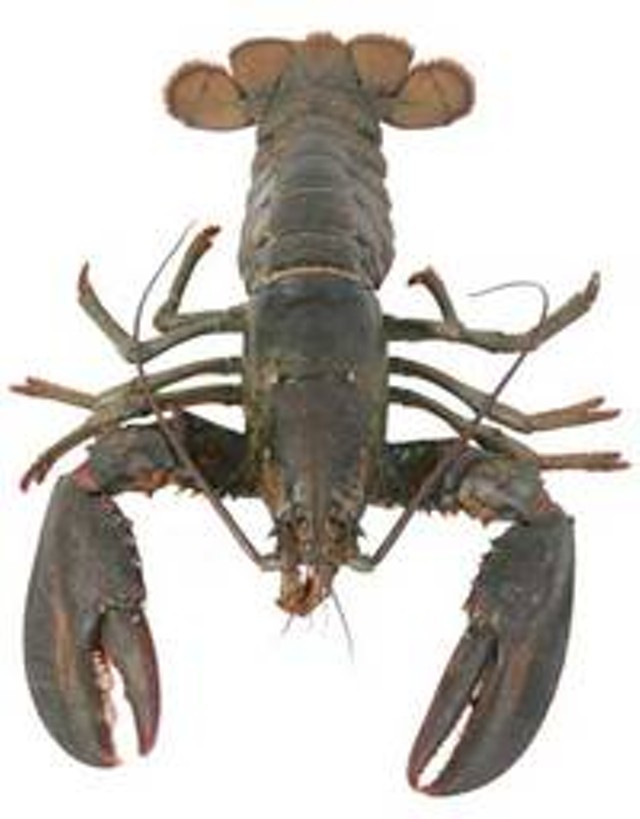Published August 15, 2007 at 4:00 a.m.
Last week, to much media furor, a 17-pound lobster named André was rescued from a tank at Price Chopper in South Burlington and flown to the New England Aquarium in Boston on a private plane. How did the crustacean end up in a nice, cool tank instead of a really large pot of boiling water? Thanks to the ministrations of two local ladies, Crystal Bennett and Elaine Cahoon. The humane women raised money to buy the $200 lobster, with help from concerned citizens as far away as Florida.
According to Tony LaCasse, the aquarium's spokesperson, the folks behind the PC seafood counter clearly aren't marine biologists. They guessed André's age at 130 and were "massively off," he reports. Experts at the aquarium estimated the creature's age to be between 25 and 40. The critter, which is "in terrific shape," is currently serving out a 30-day sentence in quarantine, as all incoming animals do, where he's happily "lording over a tank."
Rob Thorne, PC's seafood manager, is a bit baffled by the whole affair. In his view, lobsters get an unusual amount of sympathy by comparison with the steaks that line the store's coolers. Why don't consumers have a beef with the beef? "They don't have to look at any eyes, so they don't care," he speculates. And when softies ask if the lobsters will eventually be killed, Thorne quips, "That's why they're here."
Thorne says the grocery store doesn't routinely carry gargantuan sea creatures: The ones they order are in the "4- to 6-pound range." André's visit was an anomaly.
In LaCasse's viewpoint, André is an important lobster despite his relative youth. Why? "Whether you're a vegetarian or you love to eat lobster, people should object to seeing really large lobsters at a grocery store or fish market," LaCasse says. Because of over-fishing, the "size of lobsters has decreased over time." Thus, leaving the big ones in the wild is good for the gene pool. Or should that be the gene ocean?
More By This Author
Speaking of Food, side Dishes
-

Q&A: Howard Fisher Delivers Meals on Wheels With a Side of Good Cheer
Dec 20, 2023 -

Video: Howard Fisher Delivers Meals on Wheels
Dec 14, 2023 -

Q&A: Alexis Dexter Rescued 57 Shelter Cats During the July Flood
Sep 13, 2023 -

Video: Two Months After the Flood, Alexis Dexter Rebuilds Kitty Korner Café in Barre and Continues to Rescue Cats
Sep 7, 2023 -

Video: Saying Goodbye to Burlington’s Penny Cluse Café
Nov 17, 2022 - More »
Comments
Comments are closed.
From 2014-2020, Seven Days allowed readers to comment on all stories posted on our website. While we've appreciated the suggestions and insights, right now Seven Days is prioritizing our core mission — producing high-quality, responsible local journalism — over moderating online debates between readers.
To criticize, correct or praise our reporting, please send us a letter to the editor or send us a tip. We’ll check it out and report the results.
Online comments may return when we have better tech tools for managing them. Thanks for reading.















































